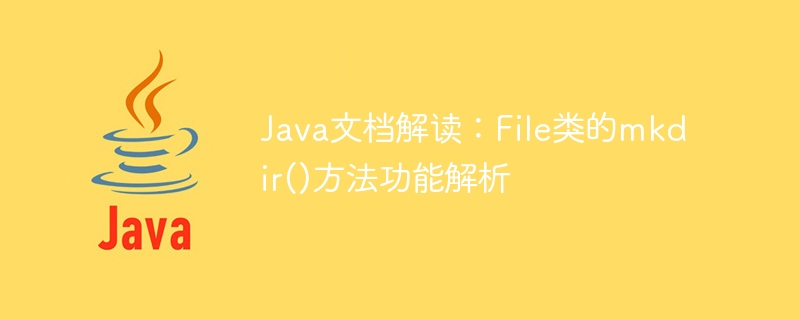

Java Document Interpretation: Function Analysis of the mkdir() Method of the File Class
The File class is one of the classes used to operate files and directories in Java, among which mkdir () method is used to create a directory. This article will analyze the function of this method and give specific code examples.
Method Example
The following is a sample code for using the mkdir() method to create a directory:
import java.io.File;
public class MkdirExample {
public static void main(String[] args) {
File dir = new File("C:/example");
boolean result = dir.mkdir();
if (result) {
System.out.println("目录创建成功");
} else {
System.out.println("目录创建失败");
}
}
}In the example, we first create a File object to represent the directory to be created Directory, here we pass in a string "C:/example" as the path to the directory. Next, we call the mkdir() method to create the directory and save the return value in the result variable.
Finally, determine whether the directory is successfully created based on the return value result, and print the corresponding prompt information.
Method analysis
(1) If the directory already exists, the mkdir() method will return false. This means that the directory cannot be created because a directory with the same name already exists.
(2) If the directory is created successfully, the mkdir() method will return true. This indicates that the directory creation operation was successful.
It should be noted that the mkdir() method can only create a single-level directory. If you want to create multi-level directories, you can use the mkdirs() method. The mkdir() method can only create the last-level directory. If you need to create an intermediate-level directory, you need to create its parent directory first.
In addition, the mkdir() method can only create directories, not files. If you need to create a file, you can use the createNewFile() method of the File class.
Summary
The mkdir() method of the File class is the method used to create a directory. It creates a single-level directory and returns true or false depending on the creation result. When using this method, you need to pay attention to the legality and permissions of the directory.
To create a multi-level directory, you can use the mkdirs() method. If you need to create a file, you can use the createNewFile() method.
By rationally using these methods provided by the File class, we can easily manage and operate files and directories.
The above is the detailed content of Interpretation of Java documentation: Analysis of the function of the mkdir() method of the File class. For more information, please follow other related articles on the PHP Chinese website!
